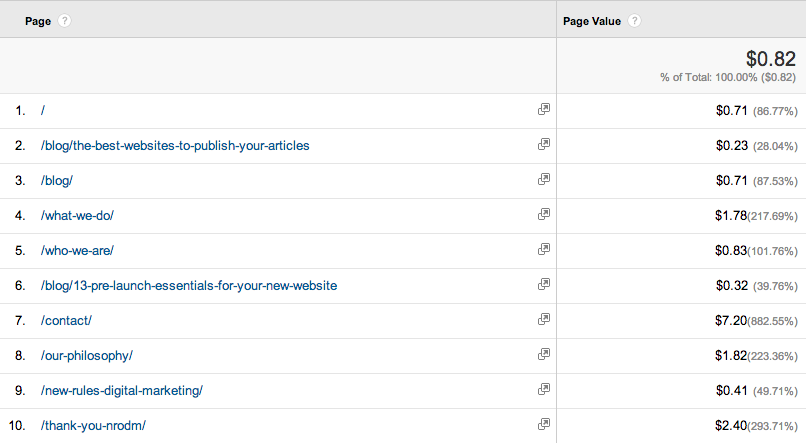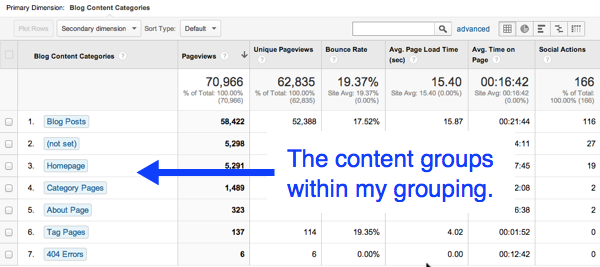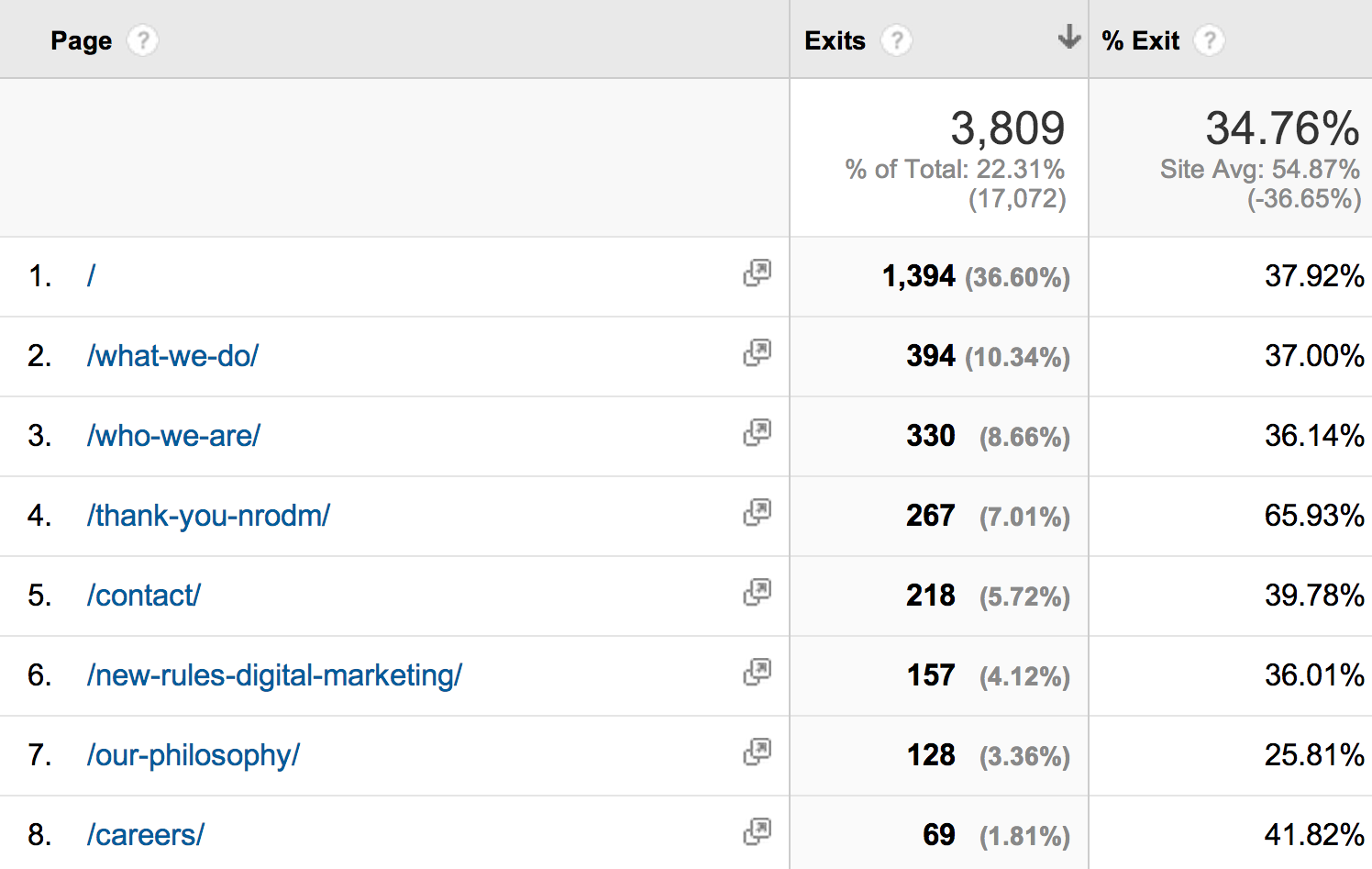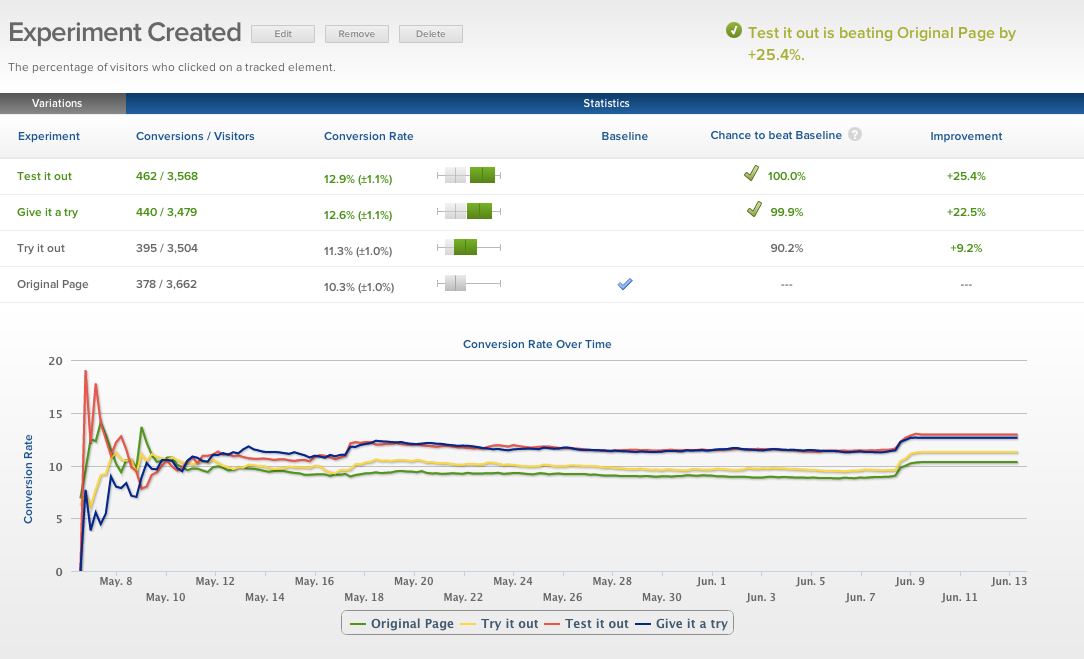For the past 10 years I’ve been obsessed with web analytics. It’s fascinating how much you can learn about a website if you know where to look and how to read between the lines. These are five priceless insights Google Analytics can give you about your website.
Your Most Valuable Pages

If the goal of your website is capturing leads, Analytics shows you the most valuable pages on your website based on how likely each page is to convert a visitor into a lead. For this to work make sure that when you set up your goals you define how much each goal is worth to you.
In this report for our own website I can see that when people visit the Our Philosophy and What We Do pages they’re very likely to get in touch with us, so we modified our home page to direct more people to these pages.

If you have an ecommerce site and have ecommerce tracking set up you’ll see what pages are generating the most revenue for you. This should give you ideas to tweak your home page and navigation to give these pages more prominence.
What Sections of Your Website Are Contributing to Your Overall Revenue
Content grouping is one of the most exciting features Google Analytics released in the last few years. It allows you to create content “buckets” for later examination. For example, you can create groups for “women products,” “products on sale” and “products featured on the home page” and then analyze each segment separately. This used to be possible only through advanced filters requiring regular expressions, but with content grouping this is very easy to do.
When it comes to web analytics, examining your entire traffic is mostly useless. Real insights come from segmenting your traffic. Imagine how powerful it would be to know how many additional dollars you’re bringing in by featuring a product on your home page, or by offering free shipping for some selected products. Great data leads to great business decisions.

Image courtesy of Cutroni.com
How Good of a Mobile Experience You’re Providing Your Visitors
In this report we can see that mobile traffic accounts for 29% of this website’s overall traffic, but has a conversion rate of 4.33% as opposed to 6.70% for desktop devices. That’s a 36% decrease in performance! This company gets 115,000 monthly mobile visitors. Each conversion is worth $45 to them. Their mobile revenue on this campaign is $224,987. A 36% increase in mobile conversions is worth $80,000 to this company, so it’s clear that designing a great mobile experience is a top priority.

Why People Are Leaving

Analyzing what pages your visitor leave your website through can provide very valuable information. But people leaving your website isn’t necessarily bad. They have to leave at one point, don’t they? What’s important is figuring out why people left. In the report above I can see that 65.93% of the people who saw the fourth page on the list left the website, but this is a confirmation page after our book download, so it’s expected that people leave after doing this. But I can also see that some people are leaving through the “What We Do” and “Who We Are” pages, which tells me I need to run heatmapping tool to understand how people are engaging with these pages, and A/B test different layouts, calls to action and marketing messaging to increase conversion rates for these two pages.
Heatmapping tools allow you to see where people are clicking on your pages.

A/B testing allows you to experiment with different marketing approaches to understand what makes people “click.” In the example below, the call to action “test it out” increased conversion rates by 25.4% compared with the original page.

Whether People Are Finding What They’re Looking For
If you have site search set up in Analytics, you can see what people are searching for, what search results pop up for each search term and whether people find what they’re looking for or leave the website.

In this example we can see that for the search terms “uptown” and “ryan” 100% of visitors are leaving the website. This is a strong indicator that they aren’t finding what they’re looking for. It would be a good idea to perform the same search and see how relevant the search results are. You might need to improve your internal search engine or tag your top pages so they’re more easily found.

